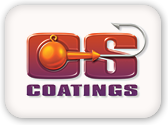Instructions |
|
How To Use The Standard Fluid BedClose valve on fluid bed clockwise and attach air supply (2-3 CFM required). Use only clean, cool, dry air passed through an oil removal filter. Open valve on fluid bed 1/4 turn. Plug in the vibrating motor. Never run the vibrating motor without air flowing through the fluid bed. Pour powder paint into the fluid bed to the level needed to coat lures properly when rack is lowered to the top of the bed. The powder paint should flow like water when coming in contact with the bottom of the fluid bed. Iif the powder paint "boils" vigorously, decrease the amount of air allowed into the fluid bed until the powder paint "simmers" or has a gentle rolling action. The powder paint will release dust for the first few moments as it cleanses itself of ultra-fine particles. This dust can be vacuumed or removed by exhaust fan. Each of the powder paints have slightly different characteristics based on their color. Some powder paints will actually fluidize better without the vibrating motor turned on. Experiment to see what works best for your application. Proper fluidization will approximately double the volume of the powder paint. This lower density is what allows a consistently uniform and smooth coating. Lures must be preheated to approximately 300-325 degrees F before they are dipped into the fluidized powder paint. Dip lures quickly into the powder paint and remove at once. A pause while dipping lures in the powder of even one second can result in a heavier coat than desired. After removing the lures from the powder, the paint should melt within a few seconds and flow out. If the finish on the lures is not smooth and glossy, increase preheat temperature 25 degrees. Curing lures after painting is highly recommeded to increase durabilty. This can be accomplished by hanging the rack of jigs back in the oven for 20 minutes at the same temperature used to preheat. Curing causes the powder paint to chemically "crosslink", creating one of the toughest finishes in the paint industry. When changing colors, thoroughly clean the fluid bed with a vacuum cleaner. The membrane at the bottom of the fluid bed is filled with millions of microscopic holes which will trap some of the powder paint. This will permanently tint the membrane, but it will not affect the next color used. Avoid getting the membrane wet as these same microscopic holes will trap water, requiring extensive drying time. Generally speaking, due to the physical characteristics of powder paint and the nature of the fluid bed's operation, we recommend its use on jigs 1/8 oz. or larger. If building your own racks, use 1/4" threaded rod to prevent lures from sliding during transportation between oven and fluid bed. |
|
